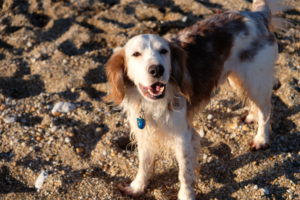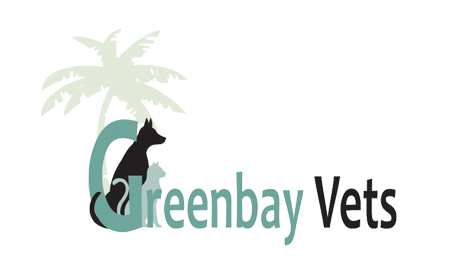Our Registered Veterinary Nurse, Laura Sproul, has recently done a course in dog and cat nutrition. This course was run by Dr Marge Chandler, a highly qualified veterinary nutritionist.
Laura has written a series of articles about pet nutrition, which we hope you will find interesting and useful. First up – basic feeding for the life stage of your dog or cat…
Feeding your dog or cat for their life stage
Be it your new puppy or kitten, or your golden oldie your pet’s needs in terms of what they eat are just as unique as them. This article will briefly cover what they need in terms of nutrition as they grow from that cute fluff ball you brought home to your retiring best friend.
Puppies and kittens
Kittens are slightly easier compared to puppies. They need a good quality food designed for their age. There are a huge range of kitten foods out there to choose from. Make sure when choosing you pick one designed for their age range. Some pet food will have a range for adolescent cats that have been neutered, these tend to be lower in calories to prevent weight gain fo llowing the hormonal changes they get from no longer being entire. Kittens can be fed by what they call free choice feeding. This means that their daily allowance is left down for them to graze on throughout the day. If you are feeding a good quality complete diet, there is no need to supplement your kitten’s diet with anything else. Kittens are less likely to become overweight compared to puppies, but they should still only be fed their recommended daily allowance. One thing kittens definitely don’t need once they have been weaned from their mum is milk. Whether it’s a specially designed kitten milk or cows’ milk. Kitten food will have everything they need, and milk can often end up over feeding them or causing unwanted stomach upsets. As with every pet make sure they have a fresh water source available.
llowing the hormonal changes they get from no longer being entire. Kittens can be fed by what they call free choice feeding. This means that their daily allowance is left down for them to graze on throughout the day. If you are feeding a good quality complete diet, there is no need to supplement your kitten’s diet with anything else. Kittens are less likely to become overweight compared to puppies, but they should still only be fed their recommended daily allowance. One thing kittens definitely don’t need once they have been weaned from their mum is milk. Whether it’s a specially designed kitten milk or cows’ milk. Kitten food will have everything they need, and milk can often end up over feeding them or causing unwanted stomach upsets. As with every pet make sure they have a fresh water source available.
Puppies are slightly more complicated. They need their diet monitored a bit more closely. Again, puppies need to be fed a complete diet designed for puppies. However, they also benefit from being fed a food designed for their breed size. These diets are better balanced for your puppies needs as they grow. Puppies being fed the incorrect diet can grow too fast or too slow, this can cause all sorts of health problems particularly with their bones that are still forming together at their age. Puppies also benefit from being fed in meals several times a day over being fed free choice like kittens. This is because free choice feeding in dogs can cause overeating, which can cause rapid growth of bones leading to health problems. They should be fed their daily allowance over three to four meals, as they get older this can be cut down to less frequent meals. This is particularly important when your puppy is at 3-5 months of age – this is what they call their rapid growth phase and where they do the majority of their growing.
Like with kittens once your puppy has been neutered their needs in terms of food change and they require less calories than they did before. Some diets are designed for neutered dogs, and others will have separate feeding guides for them too. Both puppies and kittens only need to be fed their complete diet. Adding treats in, even at a young age, can lead to issues with their weight. If you need treats for training its recommended to take some of your puppy’s kibble from their daily allowance to use instead of extras.
Adult dog and cats
Once your dog or cat becomes an adult, moving them onto an adult diet that’s complete is recommended. This should be done slowly, mixing the two diets together slowly adding one in and taking the other away. They usually recommend doing this over a period of weeks. This can help prevent those fussy eating habits they can sometimes pick up. Once you’ve found a diet that suits your pet stick to it. Changing their diet frequently can create fussy eating habits and even cause stomach upsets resulting in diarrhoea.
As with kittens, cats generally prefer to be free choice but it’s important to ensure they don’t get more than their daily allowance. Dogs tend to be happier being fed in meals but once they have finished growing if you choose to free choice feed this is ok too.
Older cats and dogs
 Changing your pet onto a senior diet is much more beneficial that you might think. Diets come in age ranges for your pet and changing them according to this allows an easy way to make sure they are getting what they need. Cats usually need to go onto senior diets from age seven. Some diet ranges will even have one for ‘geriatric’ cats from the age of 11 and up. Dogs, dependant on size, usually go on a senior diet from 6-8 years of age. These diets usually have different quantities of nutrients to ensure your pet has everything they need.
Changing your pet onto a senior diet is much more beneficial that you might think. Diets come in age ranges for your pet and changing them according to this allows an easy way to make sure they are getting what they need. Cats usually need to go onto senior diets from age seven. Some diet ranges will even have one for ‘geriatric’ cats from the age of 11 and up. Dogs, dependant on size, usually go on a senior diet from 6-8 years of age. These diets usually have different quantities of nutrients to ensure your pet has everything they need.
Cats can lose muscle mass more easily in old age so it important to make sure they eat enough. Changing them from dry to wet diets or a mix can help with this, because it make their diet more appealing. Some people will even heat their cat’s food to encourage them to eat. Making sure both dogs and cats of an old age have plenty of water is important. However, if you notice your elderly pet drinking more than they usually would it is worth chatting to the vet to make sure they are aging well.
Senior diets will normally contain what are called ‘functional’ ingredients or nutraceuticals. These are supplements such as glucosamine, omega fatty acids and antioxidants. These are added to help common ailments such as arthritis.
At Greenbay Vets we offer advice on feeding at your pet’s annual health checks and in our nurse clinics. If you have any questions, or concerns, just ask us!
Coming soon… Laura has articles covering pet food labels, raw and alternative diets – keep an eye on our Website News!
